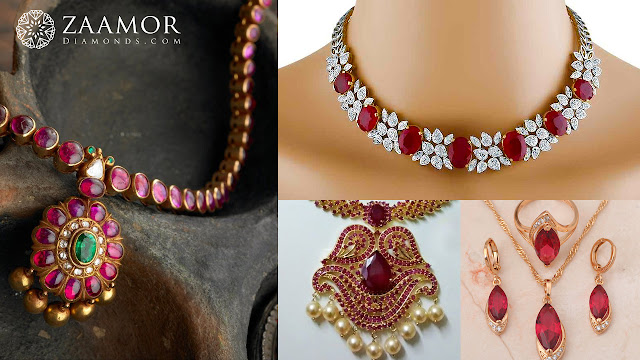Ruby is one of the most sought after (and expensive) gemstones on the market. This gem’s exceptional hardness makes it very resistant to...
Ruby is one of the most sought after (and expensive) gemstones on the market. This gem’s exceptional hardness makes it very resistant to scratching. This quality makes it possible to wear ruby jewelry every day for any occasion. The highly-prized deep, red color of the finest rubies is popularly associated with love and passion. A ruby can make a strong symbolic statement. Inclusions, which would detract from the allure of other stones, can bring a unique character to a ruby and, in rare cases, a beautiful “star stone” effect.
If you’re looking to buy a ruby, Ruby Buying Guide is essential. This guide will walk you through what you need to know about ruby quality factors, as well as the gem treatments you need to be aware of in considering your purchase.
Ruby Symbolization
Ruby is the symbol of passion, making it an ideal romantic gift. It is often associated with the objects of desire, wealth, and success.
Ruby Color Shades
Rubies generally range from all shades of red to reddish pink. Rubies and sapphires come from the same family of stones known as corundum (aluminum oxide). Generally, all red corundum is classified as rubies while the rest are classified as sapphires.
The most valuable rubies have a medium red to a medium dark red tone which is also known as “pigeon blood” red. Much darker red or lighter pinker shades are considerably less valuable. Lighter shades are classified as pink sapphires.
Ruby – 4C’s
Ruby Color
In the GIA color grading system, color consists of three qualities: hue, tone, and saturation. The basic hues are red, orange, yellow, green, blue, violet, and purple. Tone refers to a color’s relative lightness, from colorless (0) to black (10). Saturation refers to a color’s intensity, from grayish or brownish (1) to vivid (6). The dominant hue is capitalized. Other hues present are not capitalized and may be further described as “SL” for slightly and “st” for strongly.
Ruby Clarity
Clarity refers to a gem’s transparency and anything that can impact how it transmits light. All corundum gems, including Ruby, are Type II gems in terms of clarity. That means rubies usually contain inclusions. These are fractures and other materials, such as liquids, gasses, and even crystals of other minerals, within their structure. For example, some rubies contain inclusions of crystal needles of the mineral rutile. These crystals within a ruby may create a stunning star effect.
Ruby Cut
Several factors affect the cut and proportions of rubies in the market. A ruby’s crystal shape dictates its suitability for certain cuts. Ruby crystals often have a flat tubular hexagonal shape, but crystals from some sources can be elongated.
Although cutting usually has the least impact of the 4 Cs on the value of colored gemstones, the quality and choice of cut do affect the value of a ruby. Cuts that maximize light return, such as brilliant cuts, or those that enhance color, such as step cuts, are recommended. Emerald cuts add the most to a ruby’s value, followed closely by round, pear, and marquise cuts. Oval and cushion cuts are common for rubies.
Ruby Carat
Rubies are available in wide range of sizes, but fine quality rubies over 1 carat is very rare and not surprisingly very expensive.
Ruby Treatments and Enhancements
Buyers should assume that rubies have been heat treated unless sellers disclose otherwise. Heat treatments are used to remove rutile inclusions and improve color tone and saturation. Since this treatment is not unlike the natural processes that affect rubies, it does not usually negatively impact price. Other treatments, such as diffusion coloring or filling fractures with polymers or leaded glass, will affect value.
When buying a ruby, it is best if the stone comes with a certificate that proves its authenticity and origin. This is especially true if you are paying a lot of money to buy a natural high-quality stone. It’s always better to buy the certified stone instead of buying the non-certified one.








